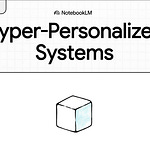Introduction: AI Isn’t Code—It’s Behavior
In traditional software development, testing gives us confidence. We write rules, build features, and test them thoroughly before anything reaches production. We have unit tests, integration tests, and regression tests. We measure coverage. If all the tests pass, we ship it.
Then AI came along.
AI solutions don’t follow rules. They learn patterns. They generalize from data. They behave differently depending on context. And critically—they can fail in ways you didn’t anticipate and can’t easily replicate.
That’s the problem.
Most companies still treat AI development like regular software development. They assume the same rules apply: write some tests, validate the outputs, and if everything looks good in staging, go live.
But this assumption is not just wrong—it’s dangerous.
In traditional software, testing ends when you ship. In AI, testing never ends. It just moves to production.
In this post, we’ll break down why testing AI before production is so hard, why traditional QA doesn’t work, and what forward-thinking teams must do instead. We’ll walk through the concepts of observability, guardrailing, and rapid rollback. And we’ll give you a practical checklist to prepare your AI systems for the real world—where users don’t behave like test scripts and edge cases aren’t rare—they’re constant.
Part 1: The Illusion of Control
The Comfort of Traditional Software
In traditional applications, you control the logic. You control the inputs and outputs. You know how the system behaves because you wrote the rules. And you test those rules to make sure they work.
If you send input A into the system, you expect output B. If you change the code, you write a new test. If the test fails, you fix the code. It’s deterministic, it’s trackable, and it’s repeatable.
Testing is built around that model.
But AI Doesn’t Work That Way
AI doesn’t follow your rules—it follows the data. It finds patterns. It approximates. And it doesn’t always get things right. You can feed it the same input twice and get slightly different outputs. Or vastly different ones depending on the data it’s seen before.
Your tests might pass in staging. But in production, with real users, real data, and real stakes, things can go sideways fast.
Worse: AI doesn’t crash. It doesn’t throw a 500 error. It just returns something plausible—but wrong.
That’s a far more dangerous kind of failure. Because it looks like it’s working… until it isn’t.
Why You Need Fast Rollback Architecture
You need to architect AI deployments differently. Because you can’t predict every failure, you have to plan for it.
Every AI-powered decision point in your system should be wrapped in a kill switch—a fast, easy way to turn it off and fall back to a safer default.
You might not catch every bug. But you can catch every failure in the real world—if you’re watching. More on that next.
Part 2: Test Coverage is a Lie in AI
What Code Coverage Tells You
In software testing, we use coverage as a confidence metric. The more of the code we test, the less risk of unexpected behavior.
But in AI, the code is not where the complexity lives. The model behavior depends on training data, model weights, hyperparameters, and even external APIs. The code paths may be well tested, but the behavior isn’t.
Why AI Test Coverage Is Incomplete
You’re not just testing logic—you’re testing judgment. And judgment doesn’t live in your codebase. It lives in your model. And your model is only as good as the data you fed it.
A model trained on biased, incomplete, or outdated data will fail—even if every line of code is covered.
Here’s what traditional coverage misses:
Rare but high-impact edge cases
Subtle biases across user groups
Model drift over time
Complex interactions between inputs
What Guardrails Look Like in Practice
To handle this, you need guardrails—constraints around what your model is allowed to do, thresholds for confidence, and fallback mechanisms for when things go wrong.
Examples:
Never let an AI chatbot give financial or legal advice.
If a prediction confidence score is below 0.6, default to “I don’t know.”
Restrict model output to specific formats or value ranges.
Cap how often an action can be taken based on AI triggers.
These rules aren’t optional—they’re your last line of defense before a bad model decision reaches your user.
Part 3: You’re Not Testing Code—You’re Testing Behavior
The Full Stack of AI Risk
The AI stack is multilayered:
Data pipelines
Feature engineering
Model architecture
Training logic
Serving infrastructure
Feedback loops
Each of these layers introduces new risks that aren’t caught by traditional tests.
AI testing is no longer just a developer or QA responsibility. It’s a cross-functional challenge involving data scientists, engineers, product managers, and compliance.
Why Observability Is a Game-Changer
You can’t test your way out of uncertainty. But you can observe it.
Observability in AI means tracking what the model is doing in real-time:
What kinds of inputs is it seeing?
How confident is it in its outputs?
Is the performance degrading over time?
Are certain user segments seeing worse results?
Observability tools let you monitor AI behavior the way you’d monitor application performance or security events. They help you answer questions like:
“What changed?”
“When did it start?”
“Who is impacted?”
“Is this a new pattern or a recurring issue?”
Why Real-World Behavior is the Only Test That Matters
Pre-production testing catches bugs. But production behavior reveals failure modes.
That’s why shadow testing—running a model on live traffic without affecting users—is critical. You compare outputs, detect regressions, and evaluate real-world performance before flipping the switch.
This requires infrastructure planning—but the payoff is massive. You learn how your model behaves under real load, with real users, in real time.
And if something breaks, your observability stack and kill switch let you act fast.
Part 4: Metrics That Lie and Metrics That Matter
Accuracy Doesn’t Mean Safe
A model with 92% accuracy might still fail your most critical use cases.
Why?
Because accuracy is an average. And averages hide outliers. If that model works great for 90% of users but fails 100% of the time for the ones you care about most—you’ve got a problem.
Better Metrics for AI Evaluation
You need multidimensional metrics:
Precision and recall to understand false positives and negatives.
F1 score to balance the two.
Per-segment performance to catch bias.
Robustness under noisy or adversarial inputs.
Explainability to trace bad predictions back to root causes.
Even better: cost-aware metrics that quantify the business impact of errors.
In fraud detection, one false negative could cost $10,000. In healthcare, a wrong prediction could harm a patient. The stakes vary—your metrics should too.
Part 5: The Culture Gap in AI Testing
Why Traditional QA Struggles
Most QA teams are great at testing rules. But AI doesn’t follow rules—it follows patterns.
That means QA needs to learn:
Statistical thinking
Data distribution analysis
Scenario-driven validation
Qualitative evaluation of outputs
And they can’t do it alone.
The Real Problem: No One Owns AI Quality
In most organizations:
Engineers think QA will catch model issues.
QA thinks data scientists are handling it.
Product teams assume if it passes tests, it’s fine.
And no one owns the behavior.
That has to change.
Build a Cross-Functional Quality Model
Here’s what good AI QA culture looks like:
QA collaborates with data scientists on test data and expected behavior.
Product defines unacceptable outcomes and success criteria.
Infra teams build observability into deployments.
Data teams monitor input drift and anomalies post-deploy.
It’s not just testing—it’s risk management for machine learning.
Part 6: What to Do Instead — Actionable Steps for AI Testing
Here’s your new testing strategy, broken into three phases:
Pre-Deployment
Diverse Data Audit
Ensure your test set reflects your full user base—age, geography, language, device, etc.Scenario-Based Testing
Create user-level workflows, not just input/output pairs. Test behaviors, not just outputs.Bias and Fairness Audits
Evaluate model performance across sensitive groups. Use demographic slices and compare results.Backtesting Against Edge Cases
Feed the model rare, adversarial, or ambiguous inputs. Watch for weird or dangerous behavior.Guardrails and Thresholds
Define max confidence drop, prohibited outputs, and safety constraints before you go live.Human-in-the-Loop Reviews
Let domain experts audit predictions for interpretability and correctness.
Deployment
Shadow Testing
Run your new model in parallel to the live one. Don’t affect users—just observe.Canary Releases
Roll out to a small subset of users first. Monitor closely. Revert if needed.Observability Stack
Use tools like Weights & Biases, EvidentlyAI, WhyLabs, or a custom dashboard to monitor:Input distribution
Output drift
Confidence trends
Latency
Kill Switch Architecture
Every AI module should have a toggle. You must be able to revert to rule-based logic or default behavior instantly.
Post-Deployment
Continuous Drift Detection
Monitor for changes in input patterns, performance degradation, or new error types.Feedback Loop Integration
Build systems to capture user feedback, flag bad predictions, and retrain safely.Regular Model Audits
Every quarter (at minimum), review model behavior across business KPIs, technical metrics, and user segments.
Conclusion: In AI, Confidence Comes From Control
AI systems aren’t static. They’re dynamic, adaptive, and often unpredictable. That makes them powerful—but also dangerous if left unchecked.
Testing AI isn’t about checking boxes. It’s about designing for failure, observing behavior, and reacting fast.
That’s the real shift.
You need observability to understand what’s happening. You need guardrails to prevent the worst outcomes. And you need a kill switch to take back control when it matters most.
In traditional software, testing ends when you ship.
In AI, testing never ends. It just moves to production.
If you’re building AI for real-world use, you can’t afford to rely on hope. You need systems, culture, and processes built for a world where the code doesn’t tell the whole story.
That’s how you use AI you can trust.










